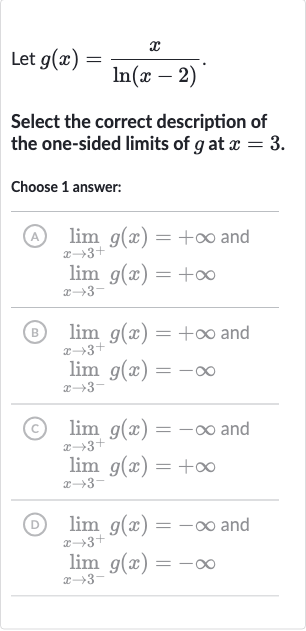Full solution
Q. Let .Select the correct description of the one-sided limits of at .Choose answer:(A) and (B) and (C) and (D) and
- Understand the Function: Understand the function and the point of interest.We are given the function and we need to find the one-sided limits as approaches from the right () and from the left ().
- Analyze Right Approach: Analyze the behavior of the function as approaches from the right ().As approaches from the right, the numerator approaches , and the denominator approaches which is . Since the natural logarithm of a number very close to from the right is a very small positive number, the fraction will approach positive infinity.
- Analyze Left Approach: Analyze the behavior of the function as approaches from the left ().As approaches from the left, the numerator approaches , and the denominator approaches which is . However, since we are approaching from the left, is slightly less than , and the natural logarithm of a number slightly less than is negative and approaches negative infinity. Therefore, the fraction will approach negative infinity.
More problems from Domain and range of relations
QuestionGet tutor help
QuestionGet tutor help

